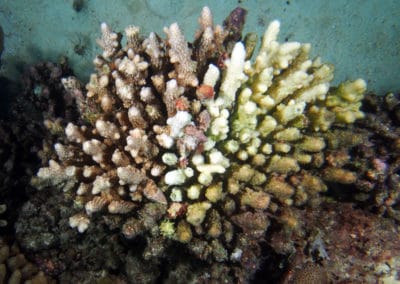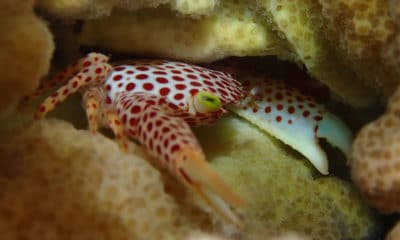Expedition Log: Maldives – Day 13
Corals have very few defenses against crown of thorns starfish (COTS). Their shape may partially protect them, especially species with long, closely spaced branches that are inaccessible to the stomach of the starfish. There are also a few species they tend to avoid, such as the finger coral (Porites cylindrica) and Porites rus. Defensive mechanisms of scleractinian corals also include nematocysts, mesenterial filaments, secondary metabolites, and the antagonistic behavior of coral symbionts.
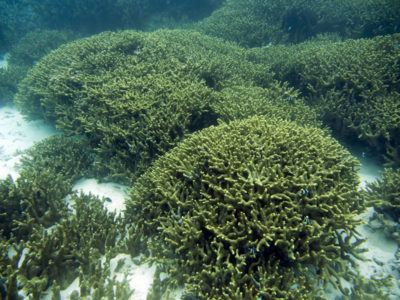
Fields of finger coral Porites cylindrical, a species not eaten by COTS.
While cleaning up COTS from a shallow fore reef, there was another coral that appeared to be avoided, at least in this location. We were removing starfish from an area with very high coral cover made up predominantly of two species – a type of table acroporid (Acropora hyacinthus) and a cauliflower coral (Pocillopora verrucosa). The starfish fed preferentially on the acroporids, avoiding Pocillopora. We’ve seen them eat this coral in other locations, but often it is avoided.
Under one of the table corals, there were seven starfish. I pulled these out from underneath the coral and added them to the pile I would later transfer to my collection bag. As I began bagging the starfish, I noticed that the first one I had removed had begun to escape, crawling over a colony of Pocillopora. The starfish appeared to be having a difficult time moving over the coral, however. On closer inspection I observed several small red crabs that had emerged from the base of the coral and were pinching the arms of the starfish and nipping off tube feet.
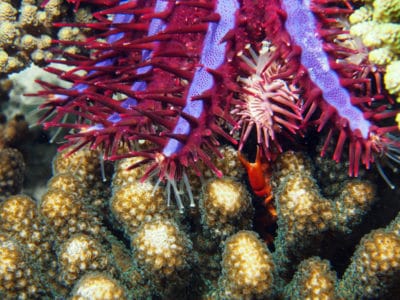
Pocillopora guard crab attacks COTS.
This coral was housing guard-crabs in the genus Trapezia. There are 22 species of guard crabs and often several species reside inside the same coral, but only one male-female pair of the same species can live there. These vary in composition depending on coral species, growth form, and reef zone. In exchange for shelter and nutrients, coral guard-crabs fiercely defend their coral hosts against corallivores, especially coral-eating snails, cushion stars, and COTS.
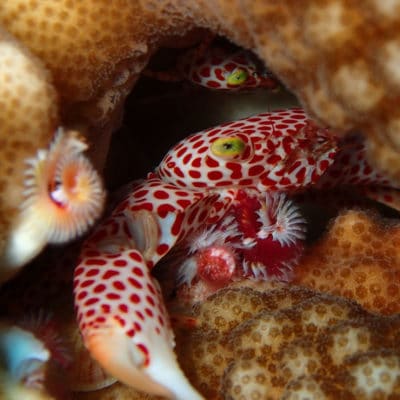
Trapezia guard crab hides amongst the branches of Pocillopora.
I looked closely within the branches of other Pocillopora colonies and noted that they also housed trapezia crabs. This appeared to be a fairly effective defense against these voracious starfish. Very fortunate for these corals as their neighbors without crabs were not faring so well.
Photos by Andrew Bruckner
